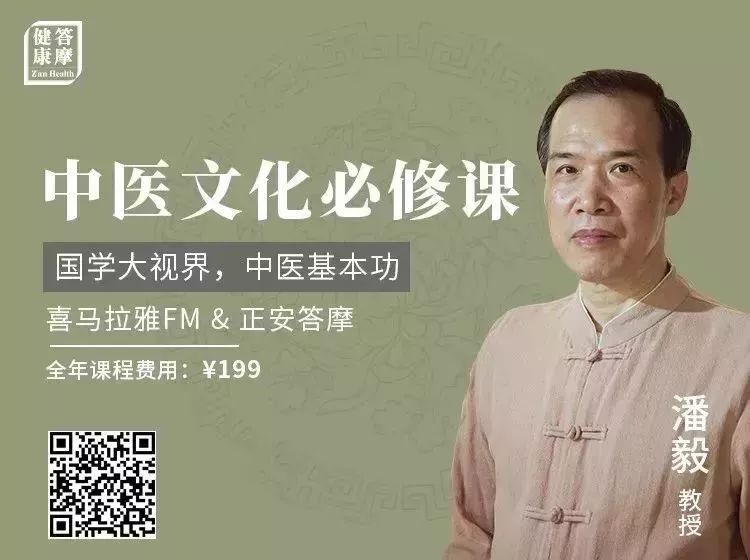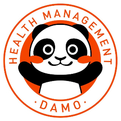Click the blue text to follow, reply with「8」 to receive today’s learning gift

Article Overview
Feeling constantly tired may not be feigned, but rather indicative of a Qi deficiency constitution.
Hello everyone. Today we will discuss the identification and nourishment of a Qi deficiency constitution.
Qi deficiency refers to insufficient Qi. We have learned previously that Qi has functions such as promoting, warming, transforming, defending, and holding.
Qi deficiency indicates a decline in these functions, along with a reduction in the material Qi that supports these functions.
Thus, a Qi deficiency constitution is characterized by insufficient Qi in the body, leading to a state of low functional capacity.

Causes of Constitution
The causes of Qi deficiency include congenital factors: inheriting a constitution of insufficient Qi and blood from parents, or maternal malnutrition during pregnancy, or premature birth.
Acquired factors: improper postnatal nourishment leading to malnutrition; or diseases damaging the spleen and stomach’s ability to transform and transport, resulting in reduced Qi and blood production; or excessive labor depleting Qi; or post-illness Qi deficiency; or aging and physical weakness.

Manifestations of Constitution
Common manifestations of Qi deficiency include mental fatigue, weakness, shortness of breath, low and weak voice, reluctance to speak, easy spontaneous sweating, dizziness, susceptibility to external pathogens, poor appetite, and exacerbation of symptoms with slight activity, weak muscles, pale or sallow complexion without luster, pale lips, pale tongue, and a preference for quiet and less movement.

Constitution Analysis
Qi deficiency gives a feeling similar to insufficient energy. To review, Qi has a promoting function, which includes stimulating the functions of various organs.
When Qi is deficient, organ functions weaken.
The heart governs the spirit; when heart Qi is deficient, it cannot invigorate the spirit, leading to mental fatigue and a preference for quiet and less movement;
The lungs govern respiration and voice; when lung Qi is deficient, one may experience shortness of breath and a weak voice;
Both heart and lung Qi have the function of holding sweat; when Qi is deficient, the ability to hold sweat weakens, leading to easy spontaneous sweating;
The lungs also disperse defensive Qi to the body surface, providing a protective function; when lung Qi is deficient, the defensive function weakens, making one susceptible to external pathogens;
The spleen governs transformation and transportation, producing Qi and blood, and also governs muscles; when spleen Qi is deficient, the transformation function declines, leading to poor appetite, fatigue, and weak muscles;
If Qi is deficient, it is difficult to produce blood, or Qi cannot circulate blood, leading to dizziness, pale or sallow complexion without luster, pale lips, and pale tongue.
It is important to note that Qi deficiency can vary in degree and location; not all symptoms need to be present to diagnose Qi deficiency constitution.
To summarize the key points for identifying Qi deficiency constitution: easy fatigue, susceptibility to colds, or weakened functions of different organs.

Common Diseases
What diseases or states are easily associated with Qi deficiency?
Common colds, allergic rhinitis, allergic asthma, organ prolapse, chronic fatigue syndrome; slow recovery after illness, etc.
Due to weakened defensive function, one is naturally more susceptible to colds; allergic rhinitis often has a background of Qi deficiency, which can be triggered when the defensive function is weakened.
Organ prolapse falls under the category of spleen Qi deficiency; to review, spleen Qi governs lifting, which includes two types of lifting: one is lifting the essence of food and drink, and the other is lifting the organs. When spleen Qi is deficient, the ability to lift the organs weakens, leading to organ prolapse.

Dietary Therapy and Nourishment
Now let’s look at common foods for Qi deficiency.
Beef, beef tripe, chicken, pigeon, pig stomach, rabbit meat, japonica rice, glutinous rice, sweet potatoes, shiitake mushrooms, lion’s mane mushrooms, black fungus, jujubes, grapes, lotus seeds, milk, goose eggs, pigeon eggs, etc.
We will explain a few of these.
Shiitake mushrooms have a sweet and neutral nature, with effects of tonifying Qi, nourishing deficiency, resolving phlegm, regulating Qi, and strengthening the spleen and appetite, treating Qi and blood deficiency, mental fatigue, and poor appetite.
Jujubes have a sweet and neutral nature, with effects of tonifying the middle, benefiting Qi, nourishing blood, and calming the spirit, treating Qi and blood deficiency, spleen deficiency, fatigue, and insomnia due to insufficient blood nourishing the heart.
However, it is important to note that jujubes are sweet and can promote dampness. Therefore, those with excess dampness, abdominal distension, and greasy tongue coating should use them sparingly. If combined with ginger, it can alleviate the cloying nature of jujubes.
Beef, particularly yellow beef, is sweet and warm, while water buffalo beef is sweet and cool; its effects include tonifying the spleen and stomach, benefiting Qi and blood, and strengthening muscles and bones. It is indicated for Qi and blood deficiency, spleen and stomach weakness, and general weakness. Beef is particularly effective in enhancing strength.

Commonly Used Medicinal Herbs
Ginseng, Codonopsis, American ginseng, Prince ginseng, Chinese yam, Huangqi (Astragalus), Bai Zhu (Atractylodes), Bai Bian Dou (Lablab bean), Licorice, Lingzhi (Reishi), Wuzhi (Five-fingered peach).
Among these, Codonopsis, Huangqi, and Bai Zhu primarily tonify the Qi of the spleen and lungs; Ginseng is the best for tonifying the Qi of the five organs; American ginseng, Prince ginseng, Huangqi, and Chinese yam can tonify both Qi and Yin; Bai Zhu, Bai Bian Dou, and Wuzhi can tonify the spleen while also eliminating dampness.
Lingzhi is somewhat unusual; it rarely appears in ancient prescriptions, but is often used in modern times to enhance immune function.
Discussion on Ginseng
Ginseng can be broadly classified into wild mountain ginseng, cultivated ginseng, and transplanted mountain ginseng.
Wild mountain ginseng is naturally propagated and grows in deep mountain forests, representing the original ecological ginseng. It also has certain requirements regarding growth years. It has significant effects in tonifying Yuan Qi, consolidating the essence, and calming the spirit.
Cultivated ginseng (the ginseng grown in parks) has certain differences in efficacy compared to wild mountain ginseng.
Transplanted mountain ginseng is a type of mountain ginseng, further divided into ‘mountain transplant’ and ‘home transplant.’ ‘Mountain transplant’ refers to farmers discovering wild ginseng seedlings, gathering them, and transplanting them to nearby mountain forests for easier management, allowing them to grow naturally; ‘home transplant’ refers to ginseng farmers transplanting cultivated ginseng seedlings to mountain forests without watering or fertilizing, allowing them to grow naturally in a wild environment.
The efficacy of transplanted mountain ginseng lies between wild mountain ginseng and cultivated ginseng.
Common processing methods include raw sun-dried ginseng, sugar ginseng, and red ginseng.
Raw sun-dried ginseng is processed through washing, sun-drying, and drying, maintaining the original shape of the ginseng, with minimal loss of effective components and volatile oils compared to red ginseng, which has a milder medicinal property.
Sugar ginseng is generally made from fresh ginseng that is insufficient in Qi and not suitable for processing into red ginseng. However, under the influence of sugar, its inherent taste can be altered, making it easier to consume.
Due to its low cost, good taste, and convenience, sugar ginseng is mainly used as a daily supplement.
Red ginseng is a processed product of ginseng, mostly derived from cultivated ginseng, and is processed through soaking, washing, sorting, steaming, drying, and other procedures. During the steaming process, chemical reactions occur due to heat treatment, resulting in changes in components and color.
There is also a rough classification: white ginseng and red ginseng.
White ginseng refers to all processed products of ginseng other than red ginseng, such as raw sun-dried ginseng and sugar ginseng, generally referred to as white ginseng.
Meanwhile, Korean ginseng, side strip ginseng, and open river ginseng indicate the place of origin. The quality of ginseng can vary by region, and some products may sell well due to good commercial practices and branding.
How to use the above ginseng? In simple terms: choose based on your current condition and which type is more suitable for you.
For example, wild mountain ginseng is mostly used in severe illness or critical situations; for daily health maintenance, such expensive options are generally unnecessary.
Red ginseng is characterized by its strong and potent nature. In cases of Qi deficiency without heat, it is a good choice, but it is more likely to cause heat than white ginseng.
White ginseng has a milder medicinal property and is commonly used for daily health maintenance.
Commonly used Chinese patent medicines include: Bu Zhong Yi Qi Wan, Shen Ling Bai Zhu Wan (powder), Si Jun Zi Wan, Xiang Sha Liu Jun Wan, Ren Shen Jian Pi Wan, Liu Jun Zi Wan, Gui Pi Wan, Ren Shen Yang Rong Wan, etc.
Among these, Si Jun Zi Wan is a general formula for tonifying Qi; Liu Jun Zi Wan is for treating Qi deficiency with phlegm; Xiang Sha Liu Jun Wan treats Qi deficiency with phlegm and Qi stagnation; Shen Ling Bai Zhu Wan is for treating spleen Qi deficiency with dampness; Bu Zhong Yi Qi Wan treats spleen Qi deficiency leading to dizziness and various organ prolapses; Gui Pi Wan and Ren Shen Yang Rong Wan are medicines that tonify both Qi and blood.
Note: Qi tonifying herbs or foods are often combined with Qi-moving items, as tonifying Qi can easily lead to Qi stagnation, so it is advisable to add some Qi-moving items.
At the same time, be cautious with bitter and cold items that can harm Yang Qi.
Common acupuncture points include: Shen Que, Guan Yuan, Qi Hai, Zhong Wan; this group of points is similar to those for a cold deficiency constitution.

Dietary Therapy and Nourishment
Next, let’s discuss a few dietary therapy recipes.
1. Ginseng Chicken Soup
15g of ginseng, 1 old hen (black chicken is also acceptable), ginger, scallions, rice wine, and salt to taste. Combine the ingredients in a clay pot, add appropriate water, and the seasonings, bring to a boil over high heat, then simmer on low heat for 2-3 hours, and it is ready to serve.
The efficacy is to greatly tonify Yuan Qi, strengthen the spleen and stomach, and treat those with chronic illness or physical weakness and fatigue.
2. Ginseng Lotus Seed Soup
10g of white ginseng, 15 lotus seeds (with hearts removed), 30g of rock sugar.
Steam for about 1 hour; ginseng can be used up to 3 times, and the third time can be consumed together with the ginseng.
In this recipe, ginseng functions to greatly tonify Yuan Qi, benefit the spleen and lungs, calm the spirit, and enhance intelligence; lotus seeds are sweet, astringent, and neutral, with effects of tonifying the spleen, stopping diarrhea, benefiting the kidneys, consolidating essence, and nourishing the heart and calming the spirit. The combination of ginseng, lotus seeds, and rock sugar results in a sweet and fragrant dish that tonifies without stagnation, with the efficacy of tonifying Qi, benefiting the spleen, and nourishing the heart and kidneys.
It is suitable for those with physical weakness, Qi deficiency, fatigue, spontaneous sweating, poor appetite, loose stools, palpitations, insomnia, nocturnal emissions, and excessive vaginal discharge in women.

Life and Exercise Conditioning
Qi deficiency constitution is actually quite similar to cold deficiency constitution; both have functional decline, but cold deficiency constitution also has a cold manifestation. Therefore, both types of constitution feel comfortable in spring and summer but uncomfortable in autumn and winter.
Those with Qi deficiency should wear warm clothing and consume warm foods in autumn and winter to nourish Yang Qi.
Qi deficiency leads to poor holding function, making one prone to sweating. Therefore, in summer heat, one should prevent excessive sweating from depleting Qi. Additionally, excessive labor can deplete Qi, so those with Qi deficiency should avoid strenuous work and also avoid cold and damp living and working environments to prevent harming Yang Qi.
Regarding exercise, Qi represents energy and function. Qi deficiency constitution indicates insufficient energy or reduced function. In terms of exercise methods, the saying from the Huangdi Neijing, “exertion without fatigue,” is particularly meaningful for this type of constitution; they are not suitable for high-intensity exercise.
It is best to engage in low-intensity, high-frequency exercise, gradually increasing intensity and maintaining consistency. Modern aerobic exercise is a better choice for those with Qi deficiency.
Therefore, traditional Chinese exercises such as Tai Chi, Ba Duan Jin, and Wu Qin Xi, which combine movement and stillness, especially those that can coordinate breathing, are particularly suitable for them.
Standing meditation and sitting meditation, as well as internal Qi cultivation practices, can also strengthen and nourish Qi, effectively improving Qi deficiency status.
During exercise, it is also important to keep warm and avoid excessive sweating; excessive sweating can deplete Qi, as sweat pores are called Qi gates; excessive sweating can easily lead to Qi depletion. Additionally, avoid exposure to wind after sweating, as those with Qi deficiency already have a low defensive function, and sweating can make one susceptible to wind, which can bring in other pathogenic factors.
☟
For more content, welcome to subscribe to the audio course

Long press the image to scan the QR code

Copyright Statement:
1. The content of this article is derived from the “Essential Course of Traditional Chinese Medicine Culture” by Damo, and all forms of reproduction are prohibited without permission.
2. The comment section at the end of the article is open for discussion. This platform supports freedom of speech, and selected comments do not represent the platform’s stance.
Today’s Editor | Bing Bing
On-Duty Editor | Xun Xun

If you like the article, please give it a thumbs up❥(^_-)

